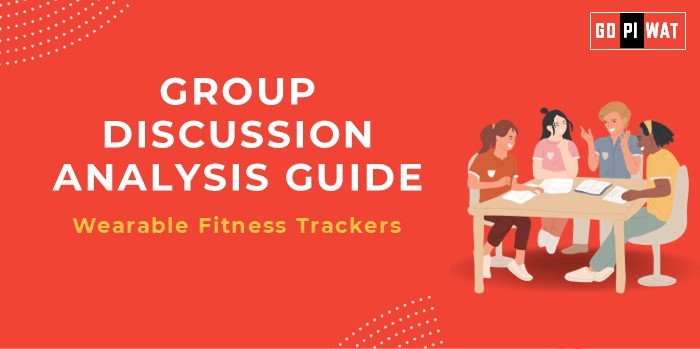📋 Group Discussion (GD) Analysis Guide: Wearable Fitness Trackers and Public Health
🌐 Introduction to Wearable Fitness Trackers and Public Health
Opening Context: With a global focus on preventive healthcare, wearable fitness trackers have emerged as powerful tools for personal health monitoring and public health insights.
Topic Background: Introduced in the early 2010s, wearable devices have gained traction due to advancements in IoT and AI. Devices like Fitbit, Apple Watch, and others now track vital metrics such as steps, heart rate, and sleep patterns. Their potential to aggregate anonymized health data positions them as key players in improving population health.
📊 Quick Facts and Key Statistics
- Market Size: $69 billion globally by 2023, projected to reach $150 billion by 2028.
- Usage Growth: 30% of adults in developed countries use wearables (2023).
- Health Data Insights: 60% of users report improved awareness of personal health metrics.
- Chronic Disease Monitoring: Wearables have reduced hospitalization rates by 20% among chronic disease patients.
- Data Integration: Over 70% of wearables integrate with public health platforms, enhancing data-driven health initiatives.
🏥 Stakeholders and Their Roles
- Healthcare Providers: Leverage wearables for remote patient monitoring and personalized care.
- Governments: Promote adoption through subsidies and integrate data for public health research.
- Tech Companies: Innovate device capabilities and ensure data security.
- Consumers: Utilize devices for proactive health management.
🎯 Achievements and Challenges
- Achievements:
- Improved Health Monitoring: Devices detect anomalies early, preventing severe health issues.
- Data-Driven Research: Aggregated data supports epidemiological studies and policy-making.
- Behavioral Impact: Users are 40% more likely to meet exercise goals when using trackers.
- Challenges:
- Data Privacy: Concerns over personal data misuse.
- Adoption Gap: High cost and limited literacy restrict usage in developing countries.
- Accuracy Issues: Metrics like calorie tracking still lack precision.
- Global Comparisons:
- Success: Japan integrates wearable data with its national health system.
- Challenges: In the US, HIPAA compliance limits wearable data utilization for research.
⚖️ Structured Arguments for Discussion
- Supporting Stance: “Wearables empower individuals to monitor and improve health, reducing healthcare costs and disease burden.”
- Opposing Stance: “The benefits of wearables are undermined by data inaccuracies, privacy risks, and unequal accessibility.”
- Balanced Perspective: “While wearables enhance health monitoring and preventive care, addressing privacy and equity challenges is crucial.”
💡 Effective Discussion Approaches
- Opening Approaches:
- Start with compelling statistics, e.g., “30% of adults use wearables, yet adoption in rural areas remains below 10%.”
- Pose a question: “Can we balance health benefits and privacy risks in wearable data usage?”
- Counter-Argument Handling:
- Present real-world solutions (e.g., GDPR compliance in Europe).
- Reference successful adoption models in countries like Japan.
📌 Strategic Analysis of Strengths and Weaknesses
- Strengths: Empowerment through data, integration with healthcare systems, and behavior modification.
- Weaknesses: Accessibility barriers, data accuracy issues, and privacy concerns.
- Opportunities: AI-powered analytics, government-funded programs, and chronic disease management.
- Threats: Cybersecurity risks and regulatory challenges.
🎓 Connecting with B-School Applications
- Real-World Applications: Projects on integrating wearables into health tech ecosystems, marketing strategies for wearable brands, and healthcare analytics.
- Sample Interview Questions:
- “How can wearables bridge the gap between preventive care and treatment?”
- “Discuss a business model to make wearables affordable for underserved communities.”
- Insights for B-School Students: Explore interdisciplinary applications in healthcare, technology, and policy.


